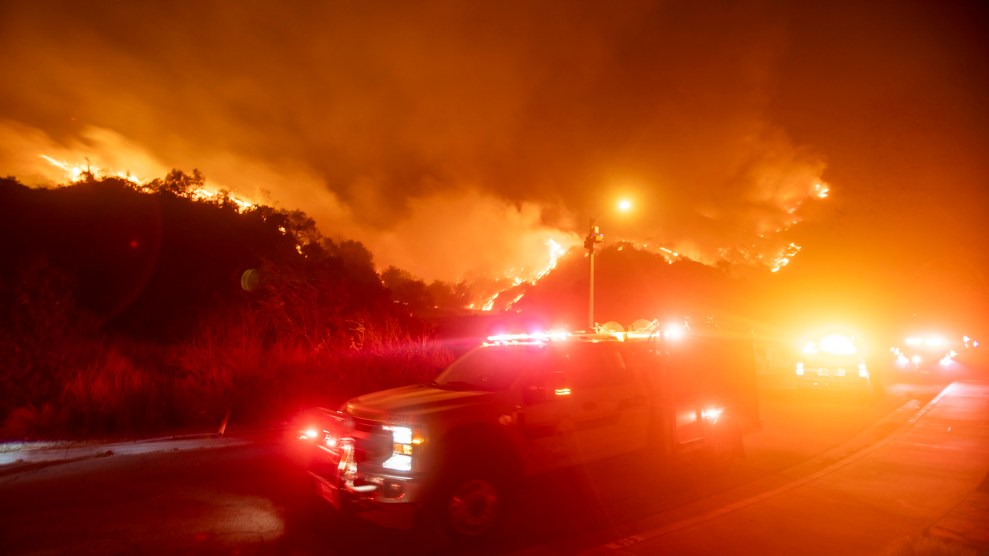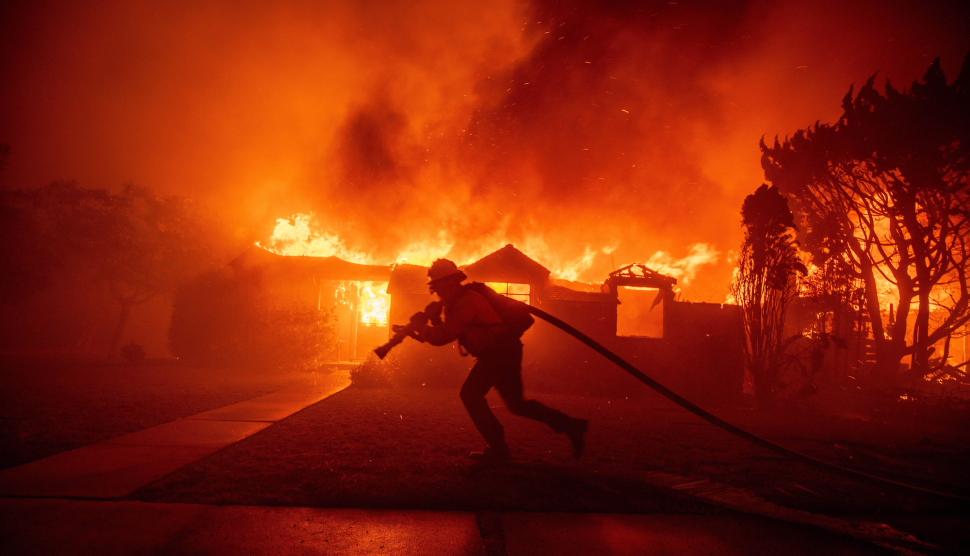By Tom Engelhardt
When you incarcerate large numbers of people beyond the reach of any court and under conditions lacking legality or oversight, it’s hardly surprising that an attitude of impunity develops among the imprisoners from which abuse and torture follow all too naturally. From Guantanamo to Iraq and Afghanistan, on military bases and in the foreign prisons of “friendly” regimes, the Bush administration now holds startling numbers of prisoners under just such circumstances and seems to be in the process of creating an offshore archipelago of injustice.
In Iraq, the numbers of those held, including women and teenagers, in “16 prisons and other incarceration centers around Iraq”, though unknown (possibly even to the U.S. military), are conservatively estimated at ten thousand, and the numbers are likely to be far higher. This week horrific photos (some of which can be clicked to below) were released showing the tortures — there is no other appropriate word for them — committed on Iraqi male prisoners by young American guards, male and female, from the 372nd Military Police Company at Saddam’s former prison of Abu Ghraib. Smiling and relaxed, they lord it over naked, hooded Iraqis, looking for all the world as if they were involved in some minor fraternity prank.
One year ago, when our President was quite literally flying high, his handlers planned the now-infamous “mission accomplished” photo-op aboard the USS Abraham Lincoln with this November’s election in mind. Triumphant images for a second term president. This week, we’ve seen a very different series of photo releases — those from Abu Ghraib and those of the American dead on Ted Koppel’s Nightline. That only a year separates the two linked moments can’t help but take your breath away. And, if the most recent reports pouring in are to be believed, on both accounts, there is more and worse to come. In this week’s New Yorker magazine, journalist Seymour Hersh reports that there already existed a scathing secret military report (“an unsparing study of collective wrongdoing and the failure of Army leadership at the highest levels”) on conditions at Abu Ghraib and the mildest thing that can be said is: “The 372nd’s abuse of prisoners seemed almost routine — a fact of Army life that the soldiers felt no need to hide.” The worst: that Iraqis were possibly murdered in the prison; that these acts were part of a criminal interrogation policy that leads right up the chain of command; and that some of the brutal interrogations were conducted not just by military intelligence and CIA operatives, but by “contract” employees — private interrogators hired by the Pentagon from two companies linked to the Bush administration, one of which reportedly contributed $400,000 to Republican Party coffers — who are evidently beyond the reach of any law.
The Bush administration will undoubtedly opt to deal with the photographed acts at Abu Ghraib as isolated incidents, but they were simply the ones where the participants felt so sure of themselves, so cloistered from any sense of possible retribution, that they evidently wanted snapshots, souvenirs to remember it all by. This is, however, part of a developing system, a global Bermuda Triangle of injustice and such acts, or their equivalents, are likely to turn out to be “routine” elsewhere as well. We must, for instance, now return to the wildest of the tales of abuse told by British prisoners recently released from Guantanamo with a new respect for their possible validity. (And here’s a little indication of where we’re headed: Maj. Gen. Geoffrey Miller, who ran our offshore prison system in Guantanamo, has only recently been reassigned to “overhaul” our sprawling detention system in Iraq.)
Juan Cole, whose Informed Comment weblog is — to my mind — the single most useful (and inspired) place on or off the Internet to follow developments in Iraq, has written a piece for Tomdispatch about the war of the images in Iraq and at home, and the ways in which it has, against all odds, left administration spinners spinning. Tom
The U.S. Has Lost the Battle of the Photographs
By Juan Cole
The war of guns is only part of any great military enterprise. It is always supplemented by a war of words and, in the modern world, a war of images. The Bush administration, despite the savvy of its spinmeisters and Hollywood-trained publicists, has lost the war of images abroad. Although it has had more success in managing war images at home, cracks have increasingly opened up on the domestic front as well.
The graphic photos of abused Iraqi prisoners released on CBS’s 60 Minutes II news show on April 28 have been reproduced as stills and transmitted all over the internet, showing up, as well, on Arab satellite television and in the Arabic press. The footage shows US military personnel forcing nude Iraqi prisoners to simulate sex acts. In others they are made to form a human pyramid. One photo now circulating shows a man badly beaten. Another shows a corpse. Sexual humiliation may be the least of the indignities inflicted on some of the prisoners.
Several of the scenes show an American woman in uniform, gesturing lewdly and prancing before the hooded, nude Iraqi prisoners. One wonders if she is playing out her insecurities as a woman in the U.S. Army, looked down on by some of her male colleagues, by lording it over Iraqi prisoners of war. Was she compensating by playing dominatrix to Muslim men she imagined to be the ultimate male chauvinists? Although the main purpose of the abuse was to soften up the prisoners for interrogation, the precise forms of humiliation appear to have been shaped by the insecurities and prejudices of the reservists, who had been given no training in the Geneva Conventions.
The reaction to the photographs in the Arab world was, predictably, fury and humiliation. Samia Nakhoul of Reuters reported that Abdel-Bari Atwan, editor of the pan-Arabist London newspaper, al-Quds al-Arabi, said, “The liberators are worse than the dictators. This is the straw that broke the camel’s back for America . . . That really, really is the worst atrocity. It affects the honour and pride of Muslim people. It is better to kill them than sexually abuse them.” She also reported the sentiments of Daud al-Shiryan of Saudi Arabia: “This will increase the hatred of America, not just in Iraq but abroad. Even those who sympathised with the Americans before will stop. It is not just a picture of torture, it is degrading. It touches on morals and religion . . . Abu Ghraib prison was used for torture in Saddam’s time. People will ask now what’s the difference between Saddam and Bush. Nothing!”
Recently, the administration has fared no better in the image wars at home. The decision of the Sinclair Broadcast Group not to carry the April 30 broadcast of the late-night television news show from ABC, Nightline, anchored by Ted Koppel, because it was devoted to reading out the names and showing photographs of fallen U.S. military personnel, typifies the politicization of images. Koppel’s show inevitably humanized the U.S. casualties in Iraq, putting faces and names with the shadowy statistics reported in most U.S. newspapers and television news shows daily.
Sinclair, headed by rightwing media mogul David Smith, issued a statement that the Nightline program “The Fallen,” “appears to be motivated by a political agenda designed to undermine the efforts of the United States in Iraq.” Democratic members of congress immediately called for a Federal Communications Commission investigation as to whether Smith was censoring the public airwaves for the sake of his own private political convictions. Senator John McCain, a former POW in North Vietnam, then weighed in with a letter to Smith: “Your decision to deny your viewers an opportunity to be reminded of war’s terrible costs, in all their heartbreaking detail, is a gross disservice to the public, and to the men and women of the United States Armed Forces. It is, in short, sir, unpatriotic. I hope it meets with the public opprobrium it most certainly deserves.”
Koppel’s program was the height of minimalism. The anchor simply read out the names of servicemen and servicewomen killed in Iraq from the onset of the war to the present. The names had been being printed in the newspapers all along. The controversy clearly lay in the presentation of over 700 images of real human faces, belonging to the deceased. Although Koppel was accused of deliberately damaging the war effort, it is not clear that the troops he is memorializing would have wished to remain anonymous. Not being, or letting others be, a mere statistic is important to the persons serving in the military in Iraq. My late friend, naval reserve Lieutenant Kylan Huffman-Jones (whose picture Koppel showed), observed to me two months before he was shot dead at Hilla that he had to keep reminding himself that each fatal casualty statistic he saw in U.S. military intelligence reports was a human being.
Even high Bush administration officials cannot seem to remember how many dead U.S. soldiers there have been at any one time as a result of the war. In congressional testimony on April 29, Deputy Secretary of Defense Paul Wolfowitz said he thought there had been “approximately 500” troops killed since the beginning of the war, of which “350” were combat deaths. In fact, as of that day 724 US troops had died in Iraq, of which 522 were combat deaths. His office later said that he “misspoke.” But this error is instructive of the way in which the hawks in Washington have hidden the costs of their Iraq adventure from the public so assiduously that they have even begun hiding it from themselves.
The over 700 U.S. servicemen and servicewomen killed in Iraq have largely been denied the commemoration that should have been accorded to them on the national stage. The White House has forbidden television coverage of the return of their coffins to Dover Air Force Base, much less coverage of their military funerals. When an enterprising journalist requested the photos of returning coffins under the Freedom of Information Act, a military bureaucrat accidentally granted the request (or perhaps it was not so much an accident as insubordination). Newspapers all over the country carried the photographs of the dozens of flag-draped coffins, despite White House reluctance to see them published.
The power of images is recognized by the Bush administration and the Pentagon, which helps explain the sometimes punitive way they have treated cameramen in Iraq. In mid-October last year, U.S. soldiers detained for several hours an Agence France-Presse photographer and a Reuters cameraman who were trying to cover the aftermath of a guerrilla attack on US military vehicles there. There have been many such incidents of the harassment by the U.S. military of cameramen in Iraq, and some have even been killed out of carelessness. The U.S. military often has seemed convinced that photographers are giving aid and comfort to the enemy, and it is certainly true that the images coming out of Iraq have greatly contributed to public disillusionment with Bush’s handling of the issue.
Fallujah would not go away, either. Among the more dramatic setbacks to the Bush administration in the image wars came in Fallujah on March 31, when guerrillas killed four American private commandos working for Blackwater Security Consulting, some of whom had previously been Navy Seals. Angry crowds desecrated and burned the bodies, then hung some from a bridge, and were filmed doing so. The infuriated mob employed a monstrous politics of theater to give voice to a growing Iraqi insistence that U.S. troops get out of the country. The depth of that sentiment was later confirmed by a USA Today/Gallup poll that showed that fully 56% of Iraqis wanted US forces out of their country in late March (the percentage can only have increased subsequently).
The images of the desecrated former Navy Seals that ran on many U.S. television news programs posed a severe danger to the Bush administration. Everyone in the press remembered how the U.S. had been forced out of Somalia under President Clinton after the images ran of Mogadishu crowds dragging dead Marines through the streets. Bush strategists feared that the American public might lose heart, and that the Iraqi guerrillas might be emboldened. Given that the military is short-handed in Iraq, and depends on an estimated 20,000 private commandos (which some observers have termed “mercenaries”), there was also a danger that it would be harder to maintain or grow this civilian contingent if they feared they could be killed with impunity.
The panic in the White House and the Pentagon over the images of what Fallujah crowds did to the American commandos helps explain the disproportionate response. The Marines besieged and bombarded the entire city, killing hundreds of persons, some unknown percentage of whom were civilians. Many Fallujan young tribesmen, who had earlier declined to do so, now picked up a gun and joined the insurgents.
Ironically, the Bush administration’s attempt to erase the images of American humiliation and replace them with images of Iraqi submission badly backfired. The footage of American war planes bombarding civilian neighborhoods shocked Iraqis, other Arabs, and the world. Even Adnan Pachachi, an Iraqi nationalist politician who had cooperated with the U.S. and served on its appointed Interim Governing Council, went on al-Arabiya satellite television and thundered, “It was not right to punish all the people of Fallujah, and we consider these operations by the Americans unacceptable and illegal.” Given Bush administration enmity toward the Arab satellite stations, Pachachi calculated both the statement and where it was made as a strong rebuke.
The problem of war images from Iraq alienating the Iraqi and Arab publics dogged the Bush administration right from the time it launched the war in March of 2003. Arab newspapers put graphic pictures of injured and maimed Iraqi children, innocent victims of the fighting, on their front pages and the enormously popular satellite television stations also displayed them. U.S. news networks and newspapers chose not to print such photographs, with the result that Arabs have been seeing a different war than Americans all along.
The Americans have never known enough about Iraqi or Arab culture to play the game in reverse, and their attempts to do so have often backfired. On April 28, Secretary of Defense Donald Rumsfeld triumphantly held up at a news conference a photograph of armed young men inside the shrine of Imam Ali in the Shiite holy city of Najaf. He wanted to prove that the shrine did not deserve to be a sanctuary, since it was being used for military purposes.
But there are no circumstances under which the Muslim world would accept a U.S. military assault on downtown Najaf that involved firefights in or damage to the shrine of Ali, the cousin and son-in-law of the Prophet Muhammad. An Iraqi public might wince at the sight of AK-47 machine guns in a holy place, but many would also see the image as one of dedicated young Muslims willing to fight a holy war to protect their sacred space against infidel encroachments. For them, Rumsfeld’s photograph is not so much incriminating as it is a matter of pride.
The images of the war have stubbornly come out despite the best efforts of Donald Rumsfeld and Karl Rove, Bush’s campaign manager. True, the wounded US soldiers and the wounded Iraqi children have gotten relatively little news coverage. But burning Humvees, bomb craters, and collapsed buildings, have all along punctuated the evening news. The intimate pictures directly touching on Americans have had a more gut-wrenching impact. The photographs of the dead fresh-faced twenty-somethings were highlighted this week by Koppel, and by major newspapers like the Washington Post. The pictures of flag-draped coffins coming into Dover have already become iconic of the Iraq war, despite earlier attempt to suppress them.
But the most fateful pictures of all have been the footage of the aerial bombardment by Americans of Fallujah, a densely inhabited city, and of American soldiers torturing and humiliating Arab prisoners. The success of the American war effort depends crucially on retaining public support in the U.S. and winning hearts and minds in Iraq and the Arab world. The images seeping out of Iraq are undermining both, because aggression, wrong-headed policies and incompetence have left a trail in photos. That is what the manipulators of the media who favor perpetual war are so afraid of.
Juan Cole is professor of modern Middle Eastern and South Asian History at the University of Michigan. He is the creator of the weblog Informed Comment and author of, among other works, Sacred Space and Holy War.
Copyright C2004 Juan Cole
Additional dispatches from Tom Engelhardt can be read throughout the week at TomDispatch.com, a web log of The Nation Institute.
















